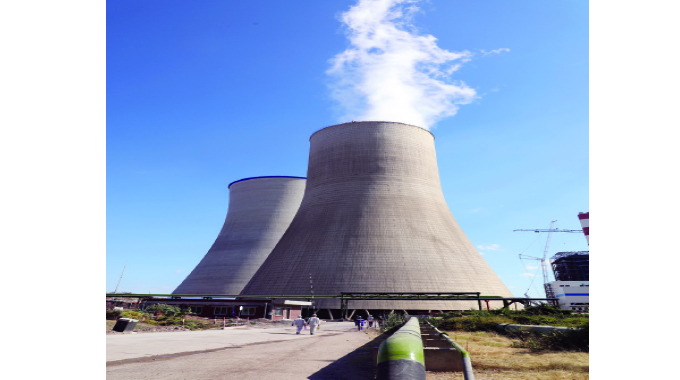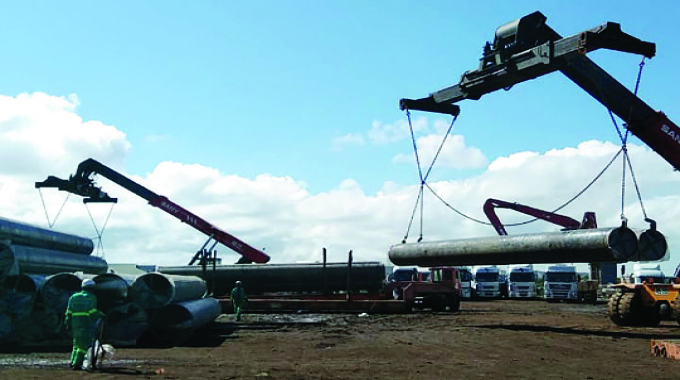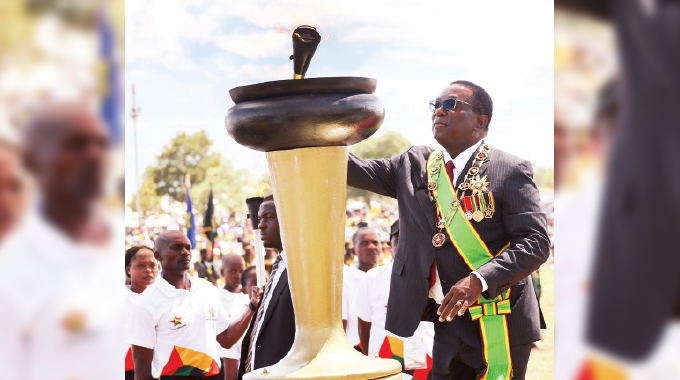Hwange expansion creates 3 000 jobs

Nqobile Bhebhe, Senior Business Reporter
ENGINEERS in charge of implementation of the US$1,5 billion Hwange Power Station Unit 7 and 8 expansion project are confident the November target for commissioning of the first phase and March 2023 deadline for the last phase will be met amid indications that 89 percent of major construction work has already been completed.

Workers on site are working round the clock to ensure the project feeds an additional 600MW from the two new coal-fired units within set timelines.
The project began in August 2018 following a groundbreaking ceremony by President Mnangagwa and is expected to be a game-changer in terms of enhancing power supply in the country.
When fully commissioned, the project will help Zimbabwe tame electricity imports and drive increased industrial production with guaranteed electricity, which is a key economic enabler.
The project is expected to employ more than 5 000 people at its peak.
Giving an update to the Parliamentary Portfolio Committee on Budget, Finance and Economic Development members who visited the power plant yesterday, Zimbabwe Power Company (ZPC) site Engineer, Forbes Chanakira, said the project has absorbed thousands of locals who are also supervising Chinese nationals.
“We are looking forward to commission Unit 7 by November this year and this means we would have increased the capacity for generation for the country,” said Eng Chanakira.

Zimbabwe Power Company (ZPC) site Engineer, Forbes Chanakira
“As ZPC we are carrying out major projects, one of them being the Hwange Unit 7 and 8 expansion. It’s one of our major projects in the country, which will assist us get adequate power as we go towards Vision 2030.
“Right now, we are at about 89 percent and this will help us to ensure that our key requirements of power generation have adequate power,” he said.
In terms of employment, Eng Chanakira said the project has created over 3 000 jobs for locals so far who are working on the project at the transmission and power plant sites.
“After completion, we will have about 360 people overseeing operation and maintenance of the plant of which during the first six years we will have Zimbabweans and Chinese nationals,” he said.
“At the first year of operating, the Chinese will be more than Zimbabweans at about 200 compared to 160 Zimbabweans.
“But as we progress towards the last six years, Zimbabweans will be taking over in terms of operations and maintenance.
They will be having sufficient capacity.”
During the tour, the parliamentary delegation was shown various key structures that have been installed with more than 1 000 workers busy at work.
The control room has been fitted with high- technology gadgets that enable monitoring of power generation and outages in real time.
Several giant pressure turbines, transformers and boilers for the two units have also been installed. With the anticipated increased power generation, transmission infrastructure is also under construction.
ZPC recently announced that it had started test runs for the Hwange Thermal Power Station Unit 7 and 8 expansion programme, and indications are that the commissioning works for the water treatment plant — a key component in the thermal generation process, are expected to be completed this month.

“Other commissioning works expected to begin in the coming weeks include the boiler auxiliary, as well as back feed energisation — a process which supplies power to run the auxiliaries until start-up of the main units,” said ZPC in an earlier statement.
“The commissioning of the various plant auxiliaries is a pre-requisite to the running of the main units, which are expected to be in full operation in March next year.”
The water treatment plant is one of the major components in the generation of power as it is responsible for turning the turbines.
Water coming from the treatment plant goes into the boiler and is heated to form steam.
The moment the water is converted into steam it goes through various super heaters which increase the temperature of the water to around 540 degrees Celsius and 17 mega Pascals at which point it will be considered as dry steam, which is then sent to the turbines side.
The turbines are then turned by the steam and the turbine in turn turns the generator resulting in electricity as the output of the whole process.
While the daily water demand for Unit 7 and 8 is 1 860 cubic metres per hour, a new 250 000 cubic metre reservoir to complement the existing one has been constructed as part of the expansion project.
Recently, Cabinet exempted Hwange Electricity Supply Company (HESCO) from entering into long-term coal supply agreements under the Hwange Expansion Power Project.
HESCO is a US$1,5 billion project funded by China Exim Bank, Sinohydro and the Government through ZPC.
The power expansion project is a landmark energy infrastructure development to add 600MW, which will significantly contribute towards the growth of the agricultural, industrial, manufacturing and mining sectors.
The groundbreaking ceremony for the Hwange power station expansion was held in June 2018 while the main construction of two additional coal-fired units of 300MW capacity each was started in March 2019.
The power station is expected to generate more than 60 percent of Zimbabwe’s electricity needs following the expansion.
The project is funded by China Exim Bank and is being executed by Sinohydro and the Government of Zimbabwe through the Zimbabwe Power Company.
The project has already created employment for locals in line with the Second Republic’s Vision 2030 which aims to transform Zimbabwe into an upper middle-income economy.











Comments